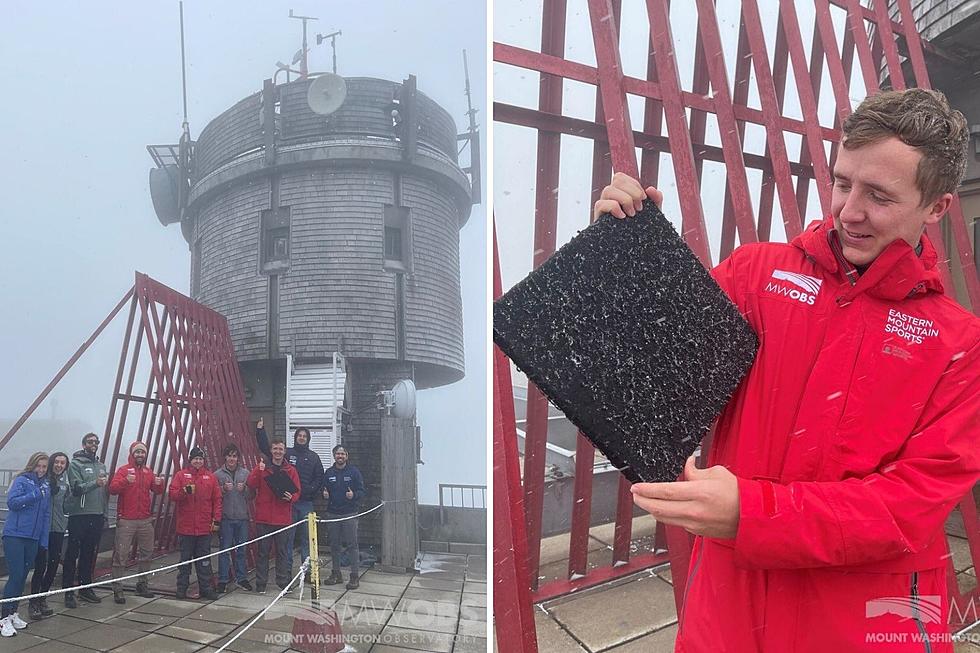
The First Signs of Winter and Christmas Were Spotted Wednesday in New Hampshire
Snow in New Hampshire
For some Granite Staters, this will be welcome and exciting news. From the time skiing closes down usually every mid-March or later, depending on the snow totals for the season, all the way until the first impactful snowfall of the following season, avid skiiers, snowboarders, snowshoers, and the like count down the days (and temperatures) until they'll be able to strap on their equipment once again.
For others, who thrive and live their best lives their, as Zac Brown would put it, "toes in the water and toes in the sand," on Maine, New Hampshire, and Massachusetts beaches -- well, that loud shattering sound you may have heard this Wednesday afternoon, that was their hearts breaking.
Mount Washington Weather
They say Mount Washington is a world of its own with its own climate, and it proved true Wednesday. While many of us poured pumpkin spice everything to our faces for National Coffee Day, which also felt like the first actual day of fall so far this season, the Mountain skipped right over fall and welcomed in winter without much warning.
You may have noticed a few days ago, Mount Washington Observatory reported, for the first time since late June, seeing their first icing event.
And that may not be the last bit of snowfall seen this week. In fact, it may not even be the last bit of snowfall the summit sees Wednesday. According to the Mount Washington Observatory Higher Summit Forecast, possible snow showers were expected the night on the mountain through Thursday night, with anywhere from barely a trace to one inch of accumulation expected.
Thankfully, back down at the base, the weather Thursday is expected to be the exact opposite of how it'll be 6,288-feet above sea level, with a mix of sun and clouds and highs in the upper-50s to low-60s. For fans of fall, cherish these next couple of months, because if the summit is any indication, it'll be over in a jumpin' jack flash. For snow bunnies, better start thinking about dusting off the equipment and giving it the ole fresh Clark Griswold wax job -- you may need it sooner than later.
It's Still Early, but Here Are 5 Ways to Prep for New England Winters Now So You’re Not Stuck Later
LOOK: The most expensive weather and climate disasters in recent decades
Do You Remember These 8 Crazy Maine Weather Events?
More From 94.3 WCYY






